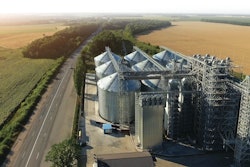
One of the first things we’re taught as students of the basis is the difference between grain values and grain margins. Grain values being the range of basis movement any given market will bear each season, and grain margins being what the merchandiser can capture within any given range of values. One is the market’s influence on the merchandiser; one is the merchandiser’s influence in the market.
As faithful students, we should continually endeavor to understand our own market’s values and strive to capitalize fully on that range. While many merchandisers across the land know this and trade accordingly, there is one aspect of this simplified approach to basis trading that often goes overlooked: the time component. The old ag marketing cliché of “time in the market, not timing the market,” though true, isn’t exactly what I’m referring to in this instance. While we all know that we need time between the purchase and the sell for basis opportunities to present themselves, there’s another side of this coin.
The aspect of time, in this case, has to do with when you buy or sell grain for a specific delivery period. To narrow this concept down even further, let’s use the example of soybeans purchased for harvest delivery to your elevator. Come with me as we take a trip back to the first quarter of 2018. You have been working with your producers over the winter, helping them to focus on profit per acre-based grain marketing, resulting in a large volume of target orders to sell harvest 2018 delivery soybeans. You’ve got a decent margin built in to your bid based on what your market’s end users/terminals are bidding for the upcoming OCT/NOV slot, and on top of that you are hopeful that basis will follow the spreads up and in the post-harvest timeframe will see some good appreciation from current levels. All this is correct thinking to be sure. As we progress through pre-planting, the board rallies. Not only do all those target orders fill, but you also buy a goodly amount for harvest delivery on those rally days. You are now sitting on the largest long the basis new crop soybean position in recent memory! This is great, as we all know how utterly vital harvest ownership of grain is to our ability to realize the greatest return-to-space each year. Life is good! Ah, but here is where many merchandisers tend to check out, with the idea being that all that needs to happen now is harvest, the setting of some spreads if needed, and of course making sales at higher levels for after harvest delivery. Simple right? In theory yes; in reality maybe not. Let’s look at how things have played out thus far.
Between a large crop and certain unavoidable political impediments, harvest 2018 soybean basis has, until very recently as of this writing, done nothing but drop since this past spring. In many markets, this drop has resulted in some historically low basis levels.
This is what we merchandisers long for, right? That all depends.
If you had nothing bought going into harvest and are buying most of your volume across the scales, yes. If you carried a big book of forward contracts into harvest, most likely the answer is no. “What happened? I thought harvest basis ownership all but guaranteed my ability to generate profitable margins?”
Right here is where that time component comes into play. Although you have been buying bushels for a single delivery slot (harvest), you bought them at different times and, in this year’s instance, for different market scenarios. One scenario, that of spring forward contracted bushels, was one of normal expectations, while the other one, that of harvest purchases, is one of a reality that ended up being more than a little different from normal. So, what does this mean going forward?
The question now is, “does this new scenario change how basis will behave coming out of harvest?” The answer is, not necessarily. If you’re in a market that traditionally sees 30-40 cents of basis improvement off harvest lows (net of spreads) you are still likely to see that sort of basis pop after gut slot. Of course, the big difference this year is where that rebound comes from. In this case, if harvest basis bottomed out 30 cents below normal, this rebound ultimately may only put values a little above what would normally be seasonal lows. While this bodes well for the bushels bought AT harvest, you’re likely underwater of those forward contracted bushels. Now what?
The important thing here is not to get hung up trying to match bushels bought with bushels sold, as counterintuitive as this may sound. It is sort of in the same vein of what our farmer customers are accustomed to hearing every year, that “the market doesn’t care what your breakeven is.”
In the case of the merchandiser, it’s “the market doesn’t care what basis you bought those bushels at.” There’s not much comfort in those words. There is truth, however, and truth leads to understanding. This is where you take a step back and look at the broader merchandising picture. Let’s consider a couple of items of importance.
Average Buy Basis– While you did have a large book of harvest delivery bushels forward contracted, if you consider how this year’s crop turned out, maybe those early bookings only represented 40% of your total harvest ownership volume. Taken together with the other 60% of owned bushels bought at harvest lows, where does that put your weighted average buy basis? Likely this gets you a better long the basis level than previously thought, but does it set you up to be profitable?
Carry Spreads这个拼图的很可能被证明be the saving grace for many soybean merchandising plans this season. Historically wide carries in soybean futures all the way out into the summer of 2019 may provide, if nothing else, a chance to make a decent margin this year. With spreads paying a few cents over the 4.5-5 cents per month cost to carry soybeans, even if basis lingers below “normal” levels from here on out, the prospect of keeping your nose above water over the next several months while waiting for basis to appreciate is alive and well.
While these two points by no means guarantee your ability to generate substantial margins on soybeans this marketing year, they hopefully will allow you to come out on the plus side of breaking even. The key point to remember going forward from the 2018 harvest is that basis values need to be viewed in the proper perspective. If your ownership value is skewed higher due to getting long the basis last spring, waiting for opportunities to sell those bushels at a profit (substantial or otherwise) might prove detrimental to your merchandising plan, if not just outright futile. Rather, viewing any basis appreciation coming out of and away from harvest in light of where values stand currently will likely present you with a better picture of expectations and, ultimately, reality.
作为基础的好学生,我们学习from this experience, and how do we adjust our actions moving forward? A big takeaway would be vigilant market awareness, both time and position wise. If you find yourself booking a substantial amount of new crop grain ahead of harvest again, it’s a good idea to consider your overall grain merchandising plan before deciding just to sit tight, even if harvest is a full growing season away.
If you also consistently fill your space at harvest, turning and burning bushels just to stay open, maybe it’s worth considering selling some or all those forward contracted bushels for that harvest slot. Assuming you bid a decent margin in your new crop price (please don’t neglect this!), you can likely lock in a nice profit on those bushels. If space isn’t a concern at harvest, consider selling a post-harvest slot and lock in a margin there. The fringe benefit of doing this is if there’s a summer rally, your margin call exposure could be greatly reduced. Perhaps the greatest benefit of any of this type of action is that you’ll free yourself from the worry of “did I pay too much for these bushels, and will I be able to turn a profit on them?” This alone will allow you to focus on the opportunities that lie ahead. ■
Roger Gattisjoined the White Commercial Corp. team as a grain merchandising specialist in 2014, after serving the WCC family as the manager/merchandiser of participant elevators in the South and Midwest since 2003. He can be reached at 816-666-8708 or roger@whitecommercial.com and on Twitter @weevilhog.





















